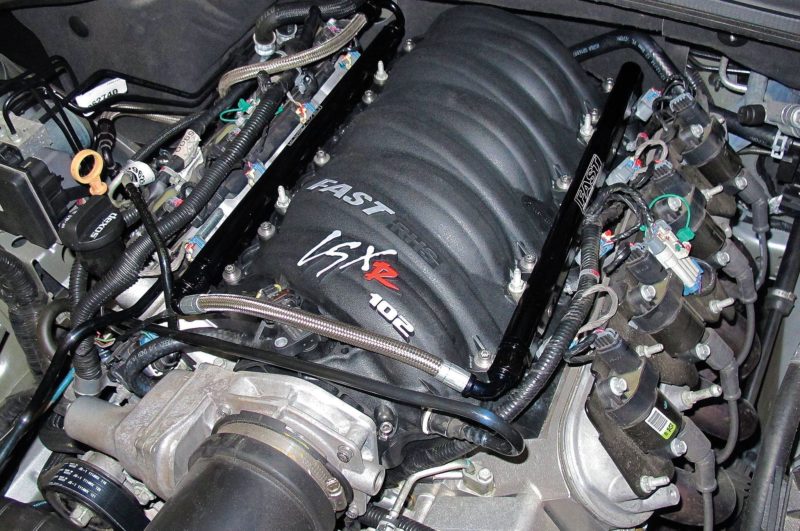
Our test subject, a 2012 Camaro SS and its modified LS3. Modifications included a Trick Flow Specialties heads, cam, and headers package, FAST LSX intake and fuel rails, and Airaid cold air intake system. On the chassis dyno it makes about 490 horsepower. (Image/Patrick Hill)
Think because your engine is fuel injected you don’t need to worry about heat causing you problems and stealing horsepower?
Think again.
Fuel injectors and the rails that hold them are just as susceptible to heat issues as the carburetors they replaced. Located on top of the engine, fuel rails see a lot of heat exposure.
On late model vehicles this issue is further compounded by how compact and tight modern engine compartments tend to be, along with the factory engine covers that are all the rage these days, trapping even more heat that can be transferred to the fuel as it flows through the rails on its way to the injectors.
As fuel gets hotter, it will become more vaporous, and in a closed system it can build pressure that will lead to fuel flow irregularities, especially inside the fuel rails. And since fuel becomes more vaporous at hotter temperatures, it also becomes less dense, leading to a weaker fuel charge delivered into the cylinders by the fuel injectors.
This can cause a lean issue that creates a ripe environment for detonation, which will reduce horsepower as the computer senses the detonation and begins reducing ignition timing along with other adjustments to elimination the detonation.
In these types of scenarios, just one degree less of ignition timing can cost you 10-12 horsepower.
Hot, more vaporous fuel also doesn’t atomize as efficiently, which can negatively affect the injector spray pattern and how the fuel mixes with the air, both of which can cause a loss of power and performance.
Larger-capacity aftermarket fuel rails are also at risk for these issues, especially in boosted applications where an underhood turbo or supercharger is creating more heat for the rails and the fuel inside them to absorb.
Seeing the problem at hand, Heatshield Products developed its FR Shields™ to combat this issue by wrapping the fuel rails in a deflective thermal barrier that keeps radiated heat from soaking into the rails (whether they be aluminum or other alloy) and heating the fuel inside the rails.
The cooler the fuel rails are, the cooler the fuel inside them will stay, which helps to improve injector performance and prevent power loss.
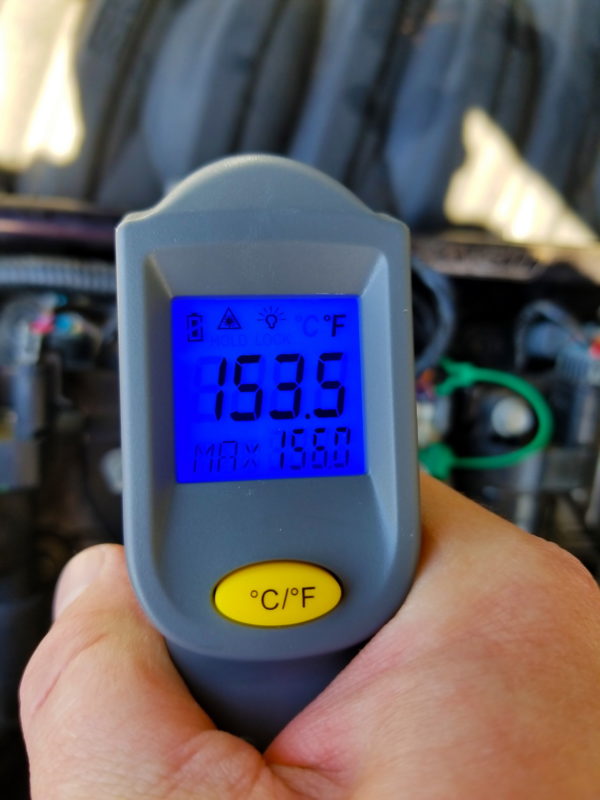
The first step was to drive the car, then take the readings of the uncovered fuel rails, including a temp reading within two minutes of parking to ensure non-running heat soak would not be a factor in the results. The driver-side fuel rail measured 153.5 degrees F. (Image/Patrick Hill)
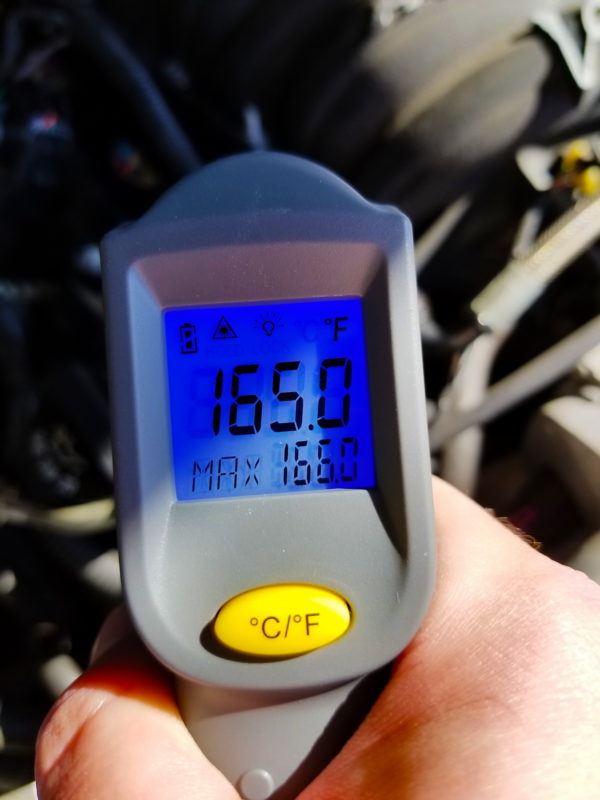
The passenger-side fuel rail read 165 degrees F. (Image/Patrick Hill)
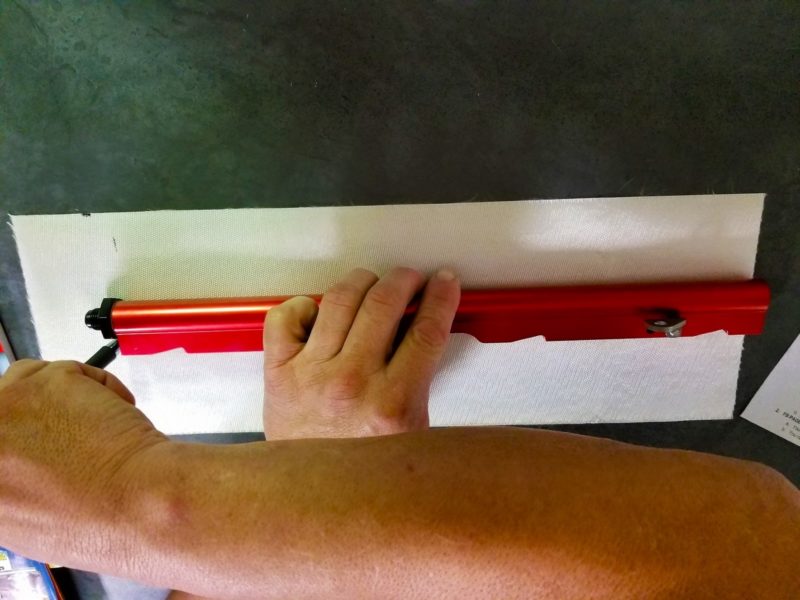
First, cut the material to the length of the fuel rail. Cutting and trimming are easy; you can use a pair of regular heavy scissors. (Image/Patrick Hill)
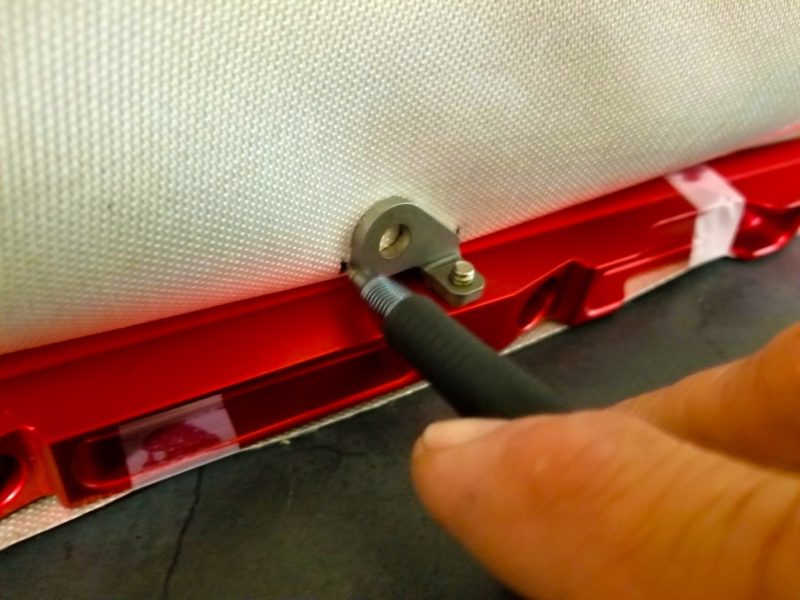
When measuring and marking for all the openings, don’t forget about a slit/hole for the fuel rail mounting tabs to pass through. (Image/Patrick Hill)
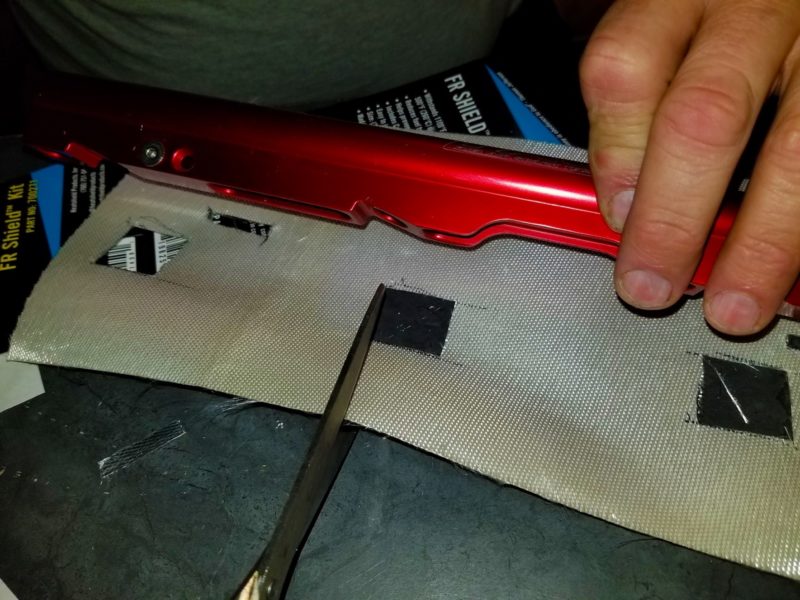
You have two options for the injectors: mark and cut holes for with an Exacto knife, or use scissors to create a flap of sorts so the FR Shields can be wrapped past the injector. (Image/Patrick Hill)
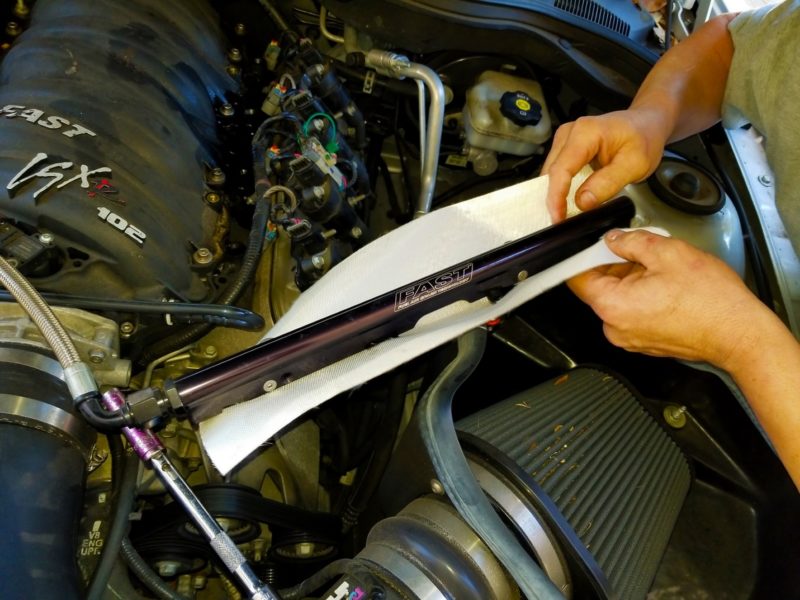
We left the fuel injectors connected to the fuel rail so that we wouldn’t have gas going everywhere. The injectors inserted into the holes in the FR Shields, and we then wrapped the material around them. (Image/Patrick Hill)
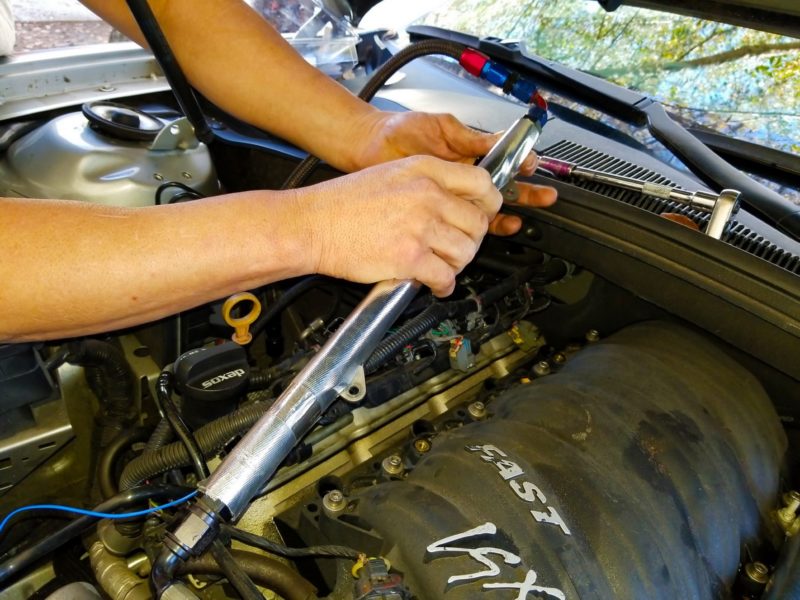
Included with the FR Shields is our specially formulated high-temp Thermaflect Tape™ to secure the heat shields to the rails and seal the seams. (Image/Patrick Hill)
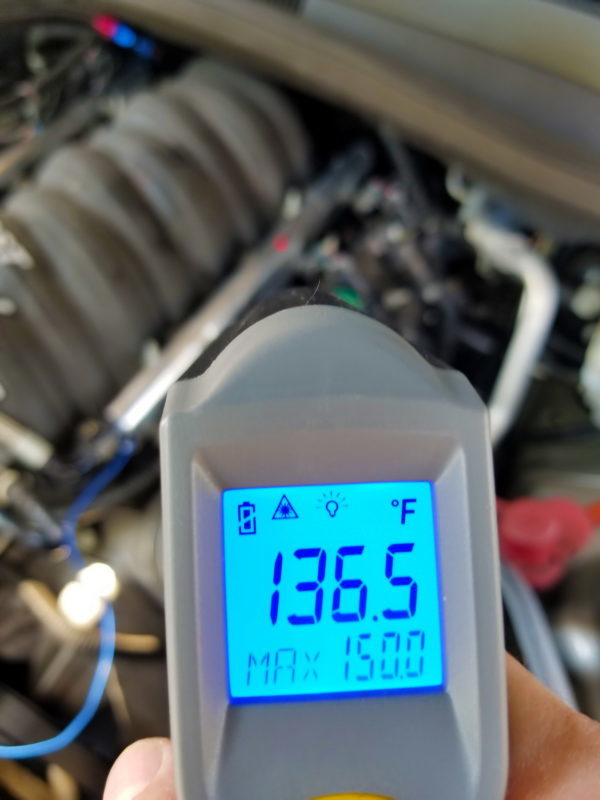
After the rails were reinstalled, we drove the car for the same amount of time as our baseline test. The driver-side fuel rail with the FR Shields on was 136.5 degrees F, down from 153.5 degrees F in our baseline—a drop of 17 degrees. (Image/Patrick Hill)
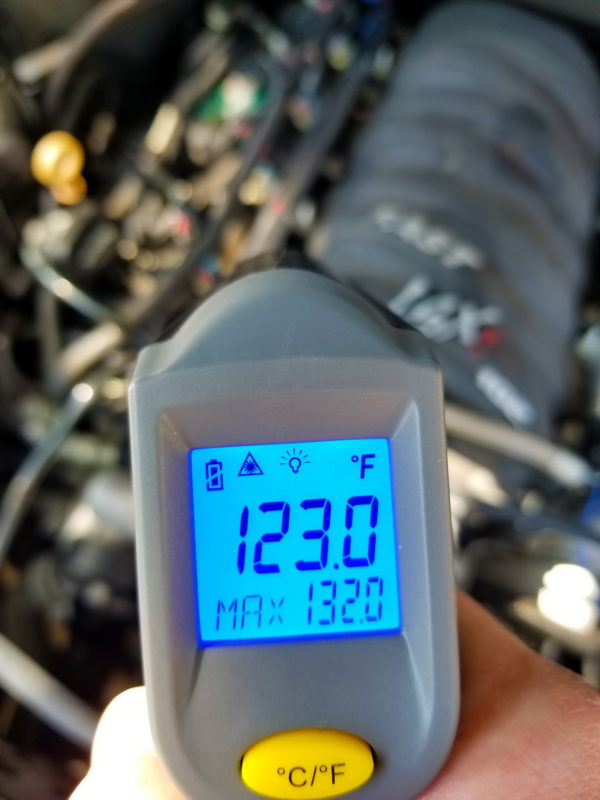
The passenger rail measured 123 degrees F, down from 165 degrees. That’s a drop of 42 degrees! (Image/Patrick Hill)
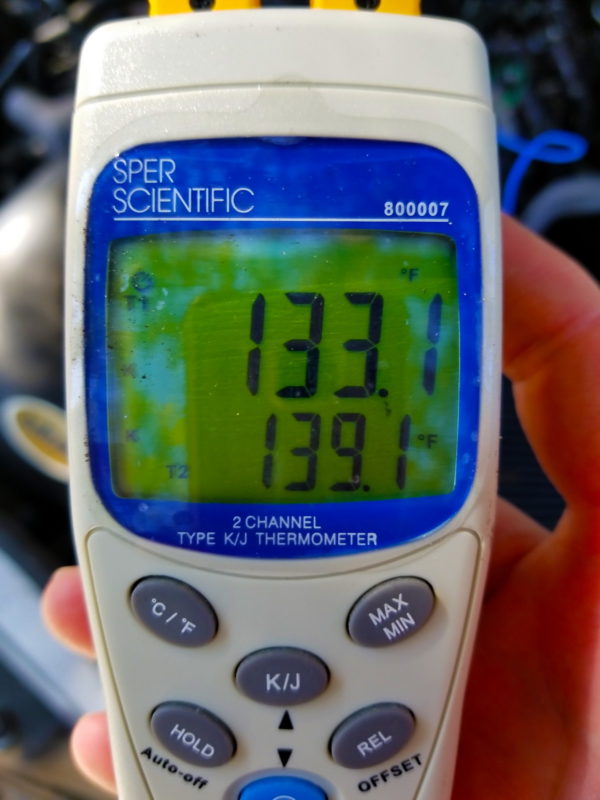
We had also mounted a probe inside both fuel rails to see what the temperatures were underneath the FR Shields. We measured 139 degrees F on the passenger rail (was 165 degrees baseline) and 133 degrees F on the driver rail (was 153.5 degrees F baseline). This gave us our true difference: a temp drop of 26 degrees F on the passenger fuel rail and 20.5 degrees F on the driver rail. Now, imagine how simple it will be to keep the fuel in your rails more than 20 degrees cooler when summer gets here! (Image/Patrick Hill)

I use Heatshield on my fuel rails and fuel lines and yes it does work well, very noticeable in the summer heat.
Is the fuel rail pressure sensor also the temperature sensor? I can’t find a part number for the fuel rail temperature sensor. My fuel rail temperature seems to be stuck at 39.4 Ford F250 6.7 diesel 2016.